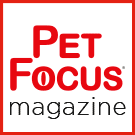Most dogs in UK come from unknown sources, investigation finds
Many pets may have been sourced through puppy smuggling.
An investigation from Naturewatch Foundation has suggested that four in five dogs in the UK may have been obtained from unknown sources.
The animal welfare charity believes that the majority of these pets have come either from unlicensed breeders, illegal breeders or have been sourced through puppy smuggling.
The investigation was launched at the end of last year, when Naturewatch Foundation submitted freedom of information requests to 391 councils across the UK and Ireland. The charity was seeking to update its Dog Breeding Map, which is designed to help those buying puppies to understand dog breeding in their area.
Responses revealed that there were 2,897 licensed breeders in the UK and Ireland, with around 26,000 female adult dogs kept for breeding – 23,000 of which are being kept in the UK.
Naturewatch Foundation estimates that, of approximately one million dogs and puppies joining UK households each year, only 15-20 per cent were coming from licensed breeders. A further six per cent are believed to have been imported commercially.
The rest of the dogs are believed to have been sourced from unknown, unlicensed or illegal sources.
Furthermore, only 34 per cent of local councils were able to confirm the exact number of dogs their licensed breeders were permitted to keep. Many were also unable to confirm numbers of male dogs, litters and any other dogs which were permitted in their area.
Naturewatch Foundation says that the majority of licensed breeders were registered to keep ten breeding adult dogs or fewer.
However, it says that some licensed breeders were being permitted to operate on an industrial scale. In Ireland, four licences were allowing over 200 adult breeding dogs to be kept by breeders.
Natalie Harney, from Naturewatch Foundation, said: “Dog lovers will be shocked to learn that most UK dogs and puppies still come from unknown sources. Despite reforms in dog breeding regulations over the past decade, loopholes and under-enforcement remain major issues.
“Plus, with rules varying across nations, it can be difficult for the public to know when a breeder should be licensed. These issues require urgent attention from regulators.”
Image © Shutterstock






 RCVS' Mind Matters Initiative (MMI) has launched round two of its veterinary mental health research grants.
RCVS' Mind Matters Initiative (MMI) has launched round two of its veterinary mental health research grants.
